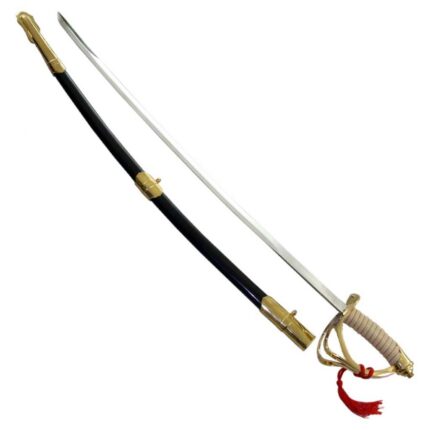Military swords have been a symbol of power and strength for centuries, representing the bravery and honor of those who serve in the military. From ancient civilizations to modern day, these swords have played a crucial role in the history of warfare and continue to be an important part of military ceremonies and traditions.
The first military swords can be traced back to ancient civilizations, such as the Greeks and Romans, who used them in hand-to-hand combat. These swords were often made of bronze or iron and were used by both infantry and cavalry soldiers. As time went on and technology advanced, the materials and design of military swords also evolved.
During the Middle Ages, knights used longswords and broadswords in battle, which were made of high-quality steel and were used to hack and slash at enemies. These swords were often adorned with intricate engravings and symbols, representing the warrior's family or country.
As gunpowder and firearms became more prevalent, military swords began to take on a more ceremonial role. In the modern era, military swords are often used in parades and other ceremonial events, such as graduations and promotions. There are a variety of different types of military swords, each with their own unique history and significance.
Some popular examples include:
U.S. Marine Corps NCO Sword: This sword is worn by non-commissioned officers in the Marine Corps and is a symbol of their leadership and authority. It is also used in ceremonial events, such as parades and graduations.
U.S. Army Officer's Sword: This sword is worn by commissioned officers in the Army and is a symbol of their rank and authority. It is also used in ceremonial events, such as parades and graduations.
U.S. Navy Officer's Sword: This sword is worn by commissioned officers in the Navy and is a symbol of their rank and authority. It is also used in ceremonial events, such as parades and graduations.
British Royal Navy Cutlass: This sword was used by sailors in the Royal Navy during the 18th and 19th centuries and was designed for close combat on ships. It has a curved blade and was often used to cut through ropes and other obstacles on the deck.
German W.W.II Luftwaffe Dagger: This dagger was used by officers in the German Luftwaffe during World War II and was a symbol of their rank and authority. It features an ornate hilt and a double-edged blade.
Regardless of their specific history and use, military swords are a symbol of honor and bravery for those who serve in the military. They are an important part of military tradition and continue to be used in ceremonies and events to this day.






















